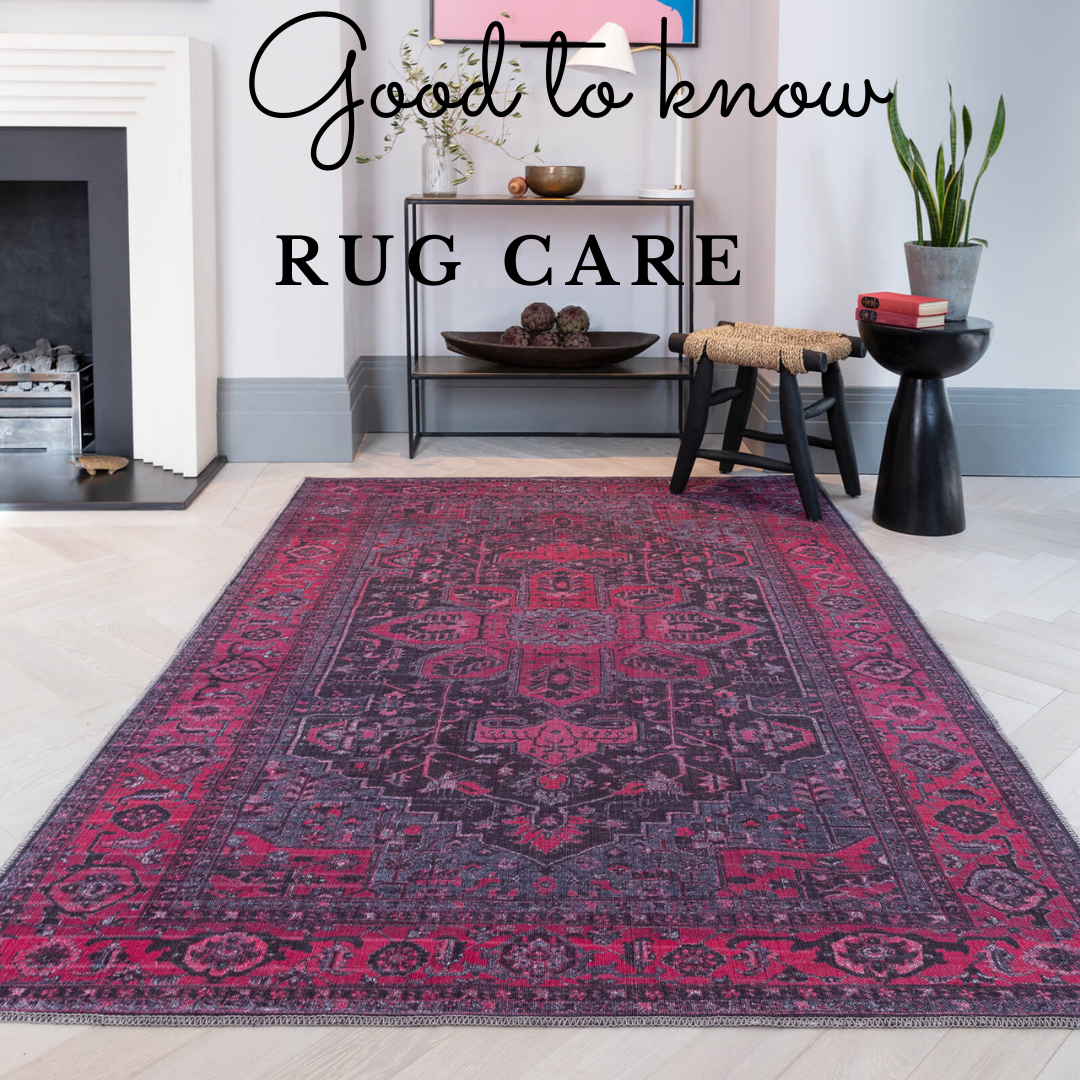
Rug Care - Good To Know
As functional pieces of interior home decor, rugs are often subjected to different kinds of running theme decor. However, with proper selfcare the rugs can look as good as new for years. Different fibers sometimes require different approaches when it comes to cleaning care but there are some common rules for any rugs care.
Color
Sometimes very slight color variations occur across dye lots so the color of handmade rugs may be marginally different from samples. But due to the handcrafted nature of the product and depending on which computer you use, the actual color may vary slightly.
Creasing
Shedding is normal for a new rug. When a new rug is delivered it may show some creases from being folded for shipping. These will disappear after the rug has been laid flat for some time. Rolling the rug with the pile facing outwards and leaving it like that overnight will speed up the process.
Odor
As rugs are shipped in a sealed bag, odors from dyes and fibers can accumulate over time. This odor will naturally dissipate over time when the rug is removed from its bag.
Wear & Fading
Rugs are subject to wear and tear over time and can become faded if exposed to direct sunlight. Keep the shades drawn during daytime. They should be rotated every six months to minimize this.
Shedding & Sprouts
New rugs often shed loose fibers as a natural part of the wearing in process. This will stop with time, particularly after they have been vacuumed a few times. Some rugs are more prone to shedding than others. Some loose, long fibers, known as “sprouts” may appear above the surface of the rug and can be trimmed with scissors to even the pile.
Rug Storage
Proper storage of rugs is important to prolong their lifespan and prevent them from becoming damaged over time. Ideally, the rug should first be thoroughly cleaned and dried before being rolled up and left in a cool, dry, dark space. Climate-controlled spaces are preferable to prevent fluctuations in temperature and humidity that can damage rugs.
Rug Storage Tips
- If possible, wrap rugs in plastic or fabric before storage.
- Never fold the rug, store your rug by rolling its front side out and wrap in a cloth for protection.
- Place in dry, well-ventilated area. Clean storage areas regularly to discourage insects.
- Rugs should not have heavy objects placed on top of them as these can cause damage.
Unpacking

As rugs are shipped in a sealed bag, odors from dyes and fibers can accumulate over time. Unroll your rug and allow it to air out. Lay flat or rolling the rug with the pile facing outwards and the wrinkles will disappear in a few days. Please follow the below steps and allow few days for the curls to flatten:
- Smooth it as flat as you can and allow it to rest for few days for the fibres to relax on their own.
- To flatten corners that are curling upward, fold them slightly under so the curve points down, leaving them that way for a day or two.
- If they already curl under, flip the rug over and curl the corners under, or leave the rug upright and set a heavy object near each corner for a day or so to relax the carpet fibres.
Rug Pad / Protectors
On some surfaces, rugs may shift or bunch up slightly when they are walked on. Using a rug pad between the rug and floor prevents this from happening by providing extra grip between the two surfaces. As an added benefit, their padding also provides extra protection against everyday wear, adds extra padding and insulates sound, extending the life of the rug and increasing comfort underfoot. Use rug protectors under the legs of heavy furniture to avoid flattening rug piles. Use rug pad beneath your area rug. It offers a shielding wall between the rug and the floor beneath.



